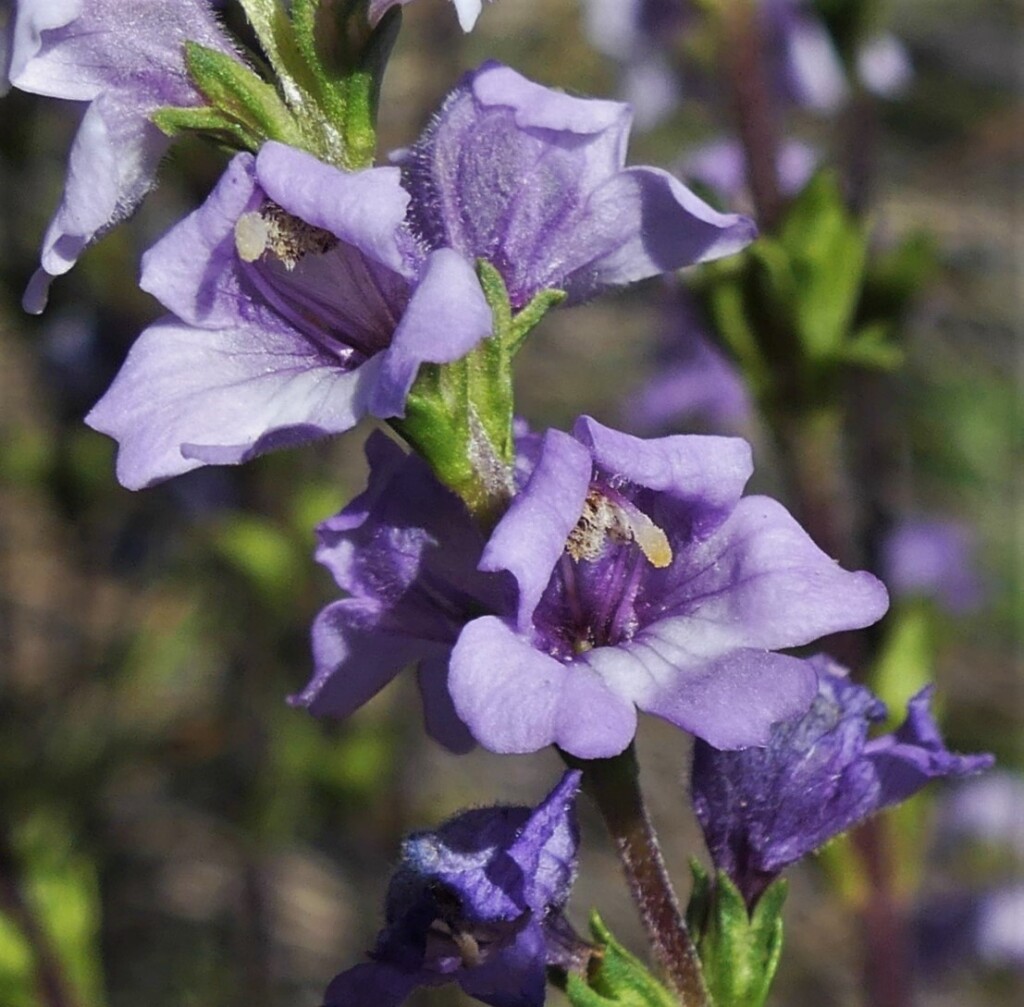Euphrasia collina subsp. collina
Plants 19–80 cm high; branches developing well above ground-level; glandular hairs absent from branches, leaves, rachis, bracts and calyces. Upper leaves 4.5–16.5 mm long, with 0–2 pairs of teeth, base rounded to narrowly cuneate; calyx externally glabrous; corollas often with yellow blotch behind lowest lobe, the lower lobes usually emarginate to truncate, rarely obtuse, externally glandular and eglandular pubescent; anthers 1.5–2.4 mm long, with rear awns 0.2–0.6 mm long. Seeds 0.7–1.3 mm long. Flowers Aug.–Feb.
Wim, GleP, Brid, VVP, VRiv, MuF, GipP, OtP, Gold, CVU, GGr, NIS, EGL, EGU, WPro, HSF, HNF, VAlp. Also SA, Tas. Scattered in sclerophyll forest or woodland (with or without a well-developed shrub understorey), heathland (often near-coastal) and swamps.
Victorian populations, particularly in the Grampians and nearby mountain areas, have leaves with longer and more acute teeth than Tasmanian populations. Leaves in coastal Victorian sites tend to the latter, while those from intervening sites tend to encompass both types.
Barker, W.R. (1999). Scrophulariaceae. In: Walsh, N.G.; Entwisle, T.J., Flora of Victoria Vol. 4, Cornaceae to Asteraceae, pp. 483–528. Inkata Press, Melbourne.
 Spinning
Spinning


